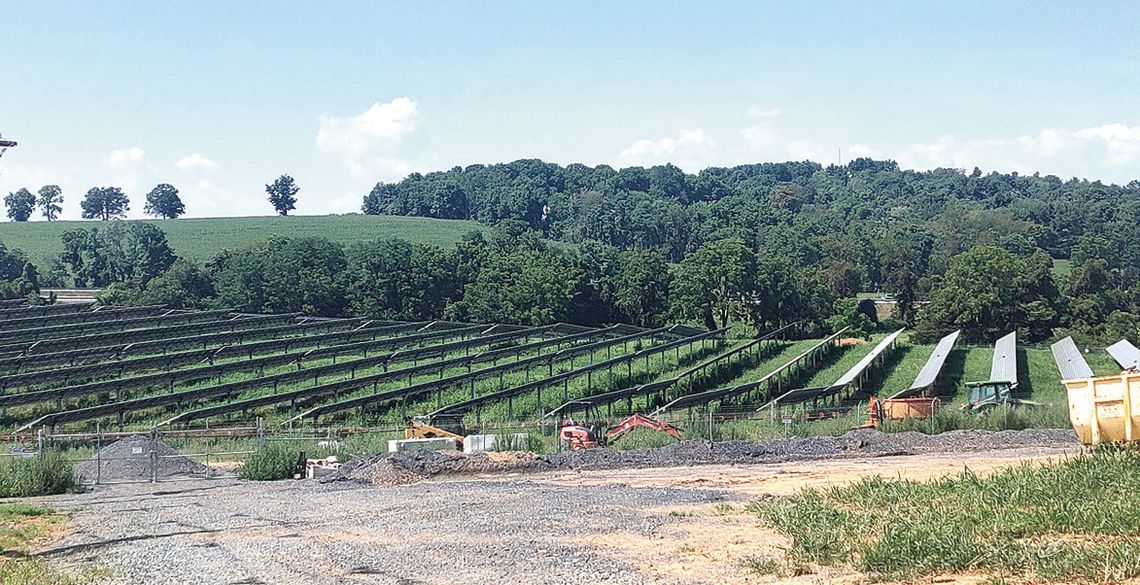Editorial Sorting Out Where Solar Should Go
Renewable energy is not a scam, as one speaker alleged at a recent public hearing on the latest updates to the Rockbridge County Comprehensive Plan. The person was speaking in opposition to allowing utility-scale solar facilities on farmland.
Such solar projects might not be much to look at, but they do contribute to efforts to produce renewable energy, which is much needed as we try to get away from burning fossil fuels and counter the harmful effects of climate change.
Applications for half-adozen utility-scale solar fields have been considered by the Rockbridge County Board of Supervisors in recent years, with four having been approved. The most recent application considered – for a 5 megawatts facility proposed to go on a farm near Raphine – was rejected on a 4-1 vote earlier this year. The applicant, Volcano Energy LLC, has since filed a lawsuit over the rejection.
The next application to be considered is for a 3 megawatts facility that Warm Run Solar LLC is proposing for the Huffman farm off of Warm Run (Va. 788) and Lincoln (Va. 763) roads, near the U.S. 11/Interstate 64 interchange. The Planning Commission will review this application on Aug. 14.
Green fields of crops admittedly make for more scenic views than rows of silver solar panels. However, the sight of a solar array is much preferred to that of a belching, coal-fired power plant. We are not in any danger of having coal burned on a utility scale here, of course, but we nevertheless have an obligation to do our part to make it less likely that these polluting projects are needed anywhere.
Climate change affects all of us, no matter where we live. It’s not a hoax and we must do all that we can to confront this existential threat, if not for us, then for future generations.
We understand the concerns of those living in idyllic bucolic settings not wanting to have their scenic views spoiled by a field full of solar panels. But these facilities have to go somewhere. A citizens committee has been working diligently to draft an ordinance that would set guidelines for the process by which the Planning Commission and Board of Supervisors decide where these solar projects should go.
Many of the citizens who have spoken out at public hearings recently have expressed the view that utilityscale solar facilities should not be allowed in agricultural districts, period – that the only areas they should be permitted in are industrial zones. These speakers have urged the county to do away with the special exception process that allows these solar arrays in agricultural districts under certain circumstances.
A fallacy of this argument, as we see it, is that such a policy could lead to one of two undesirable outcomes. One is that farmland rezoned for industrial purposes could lead to much more intensive uses of the land. The other possible outcome is that no land gets rezoned for solar facilities and the county plays no role in combating climate change.
Only .4 percent of Rockbridge County is currently zoned for industrial uses. This is as it should be, if we want our land to continue to be predominantly agricultural and forest.
We don’t accept the notion that a solar array is a permanent land use, meaning the land could never be used for farming again. There are rules in place, and, hopefully, a new ordinance will strengthen these regulations, to ensure that when the array is no longer in use, the land is returned to the condition it was in previously.
Within reason, land owners should be able to do what they want with their own properties. Allowing a farmer to generate income by leasing land for a solar project might, in some cases, be the only way to save the farm. It’s difficult to earn a living farming and we should do all we can to make it feasible for land to stay in farming.
Another option – subdividing the land for residential development – would more rapidly lead to the deterioration of scenic views and to the curtailment of farming as a way of life in Rockbridge County.
Hopefully, the planned new solar ordinance will strike the right balance of allowing farming to continue and coexist with renewable energy.
.jpg)



